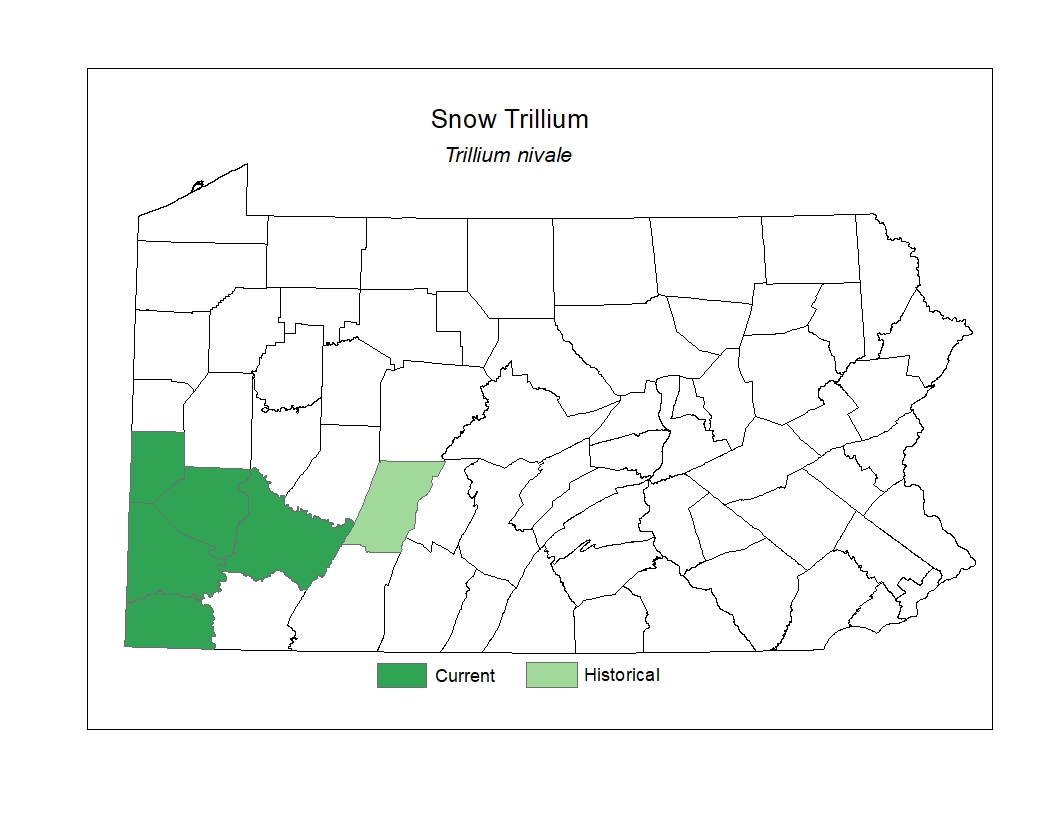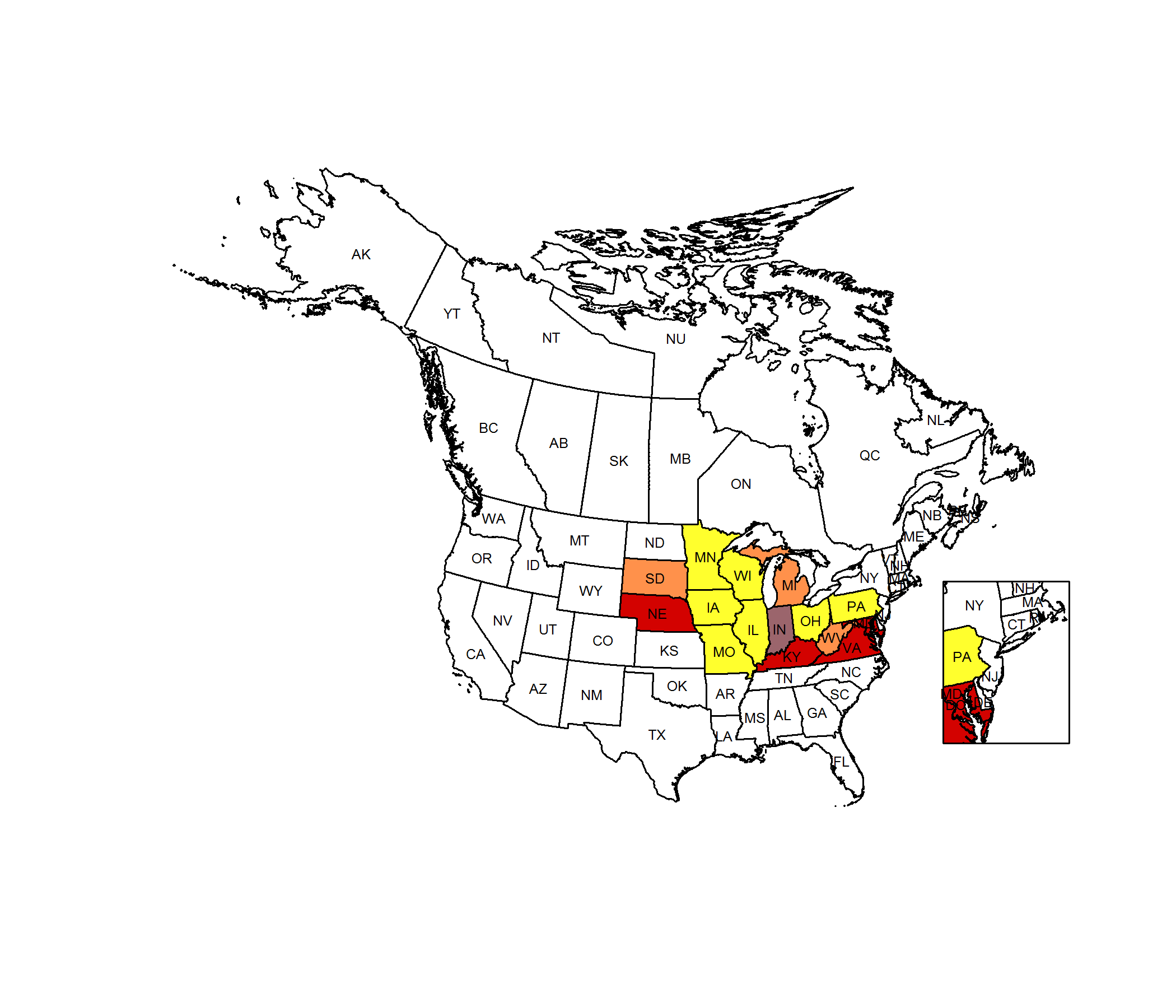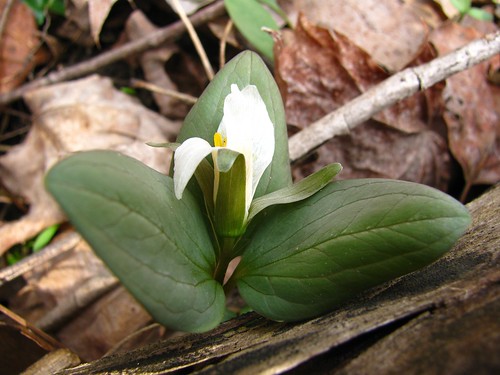 Species Factsheets
Species Factsheets
Trillium nivale
Snow Trillium
State Status: Pennsylvania Rare (PR)
PBS Status: Pennsylvania Threatened (PT)
Federal Status:
Global Rank: G4
![]() rank interpretation
rank interpretation
State Rank: S2
Did You Know?
This species is the smallest of the trilliums and it is one of the earliest wilflowers to bloom in woodland areas.
Description
Snow trillium (Trillium nivale) is a small member of the lily family, growing only up to 15cm tall. Its structure is very simple: a single stem rises from a short, thick rhizome (underground stem) to a single whorl of leaves, then a single flower. The seeds bear fatty elaiosomes, which attract ants to carry seeds away from the parent plant. Individual plants may live more than eight years.
Rank Justification
Imperiled in the nation or state because of rarity due to very restricted range, very few populations (often 20 or fewer), steep declines, or other factors making it very vulnerable to extirpation from the nation or state.
Habitat
Snow trillium grows in wet, fertile woodlands. It is a calciphile, prefering soil with high limestone content.
Survey Dates
Flowers late February - March
Distribution

Threats
Threats to snow trillium include habitat destruction by logging and quarrying, grazing in the Midwest, and competition from invasive species in some areas. Its populations are often small and widely scattered across its range.
Management
Snow trillium can most benefit from preservation of undisturbed habitat, with consideration given to save areas large enough for population expansion. Control or removal of invasive exotic competitors will also help.
Conservation Status Map

NatureServe. 2017. NatureServe Explorer: An online encyclopedia of life [web application]. Version 7.1. NatureServe, Arlington, Virginia. Available https://explorer.natureserve.org.
https://www.illinoiswildflowers.info/woodland/plants/snow_trillium.htm
- NatureServe. 2018. NatureServe Explorer: An online encyclopedia of life [web application]. Version 7.1. NatureServe, Arlington, Virginia. Available at https://www.natureserve.org/explorer
- Pennsylvania Natural Heritage Program. 2018.
- Rhoads, A.F. and W.M. Klein, Jr. 1993. The Vascular Flora of Pennsylvania. American Philosophical Society, Philadelphia, Pennsylvania. Rhoads, A.F. and T.A. Block.
- 2007. The Plants of Pennsylvania: An Illustrated Manual. 2nd edition. University of Pennsylvania Press, Philadelphia, Pennsylvania.







